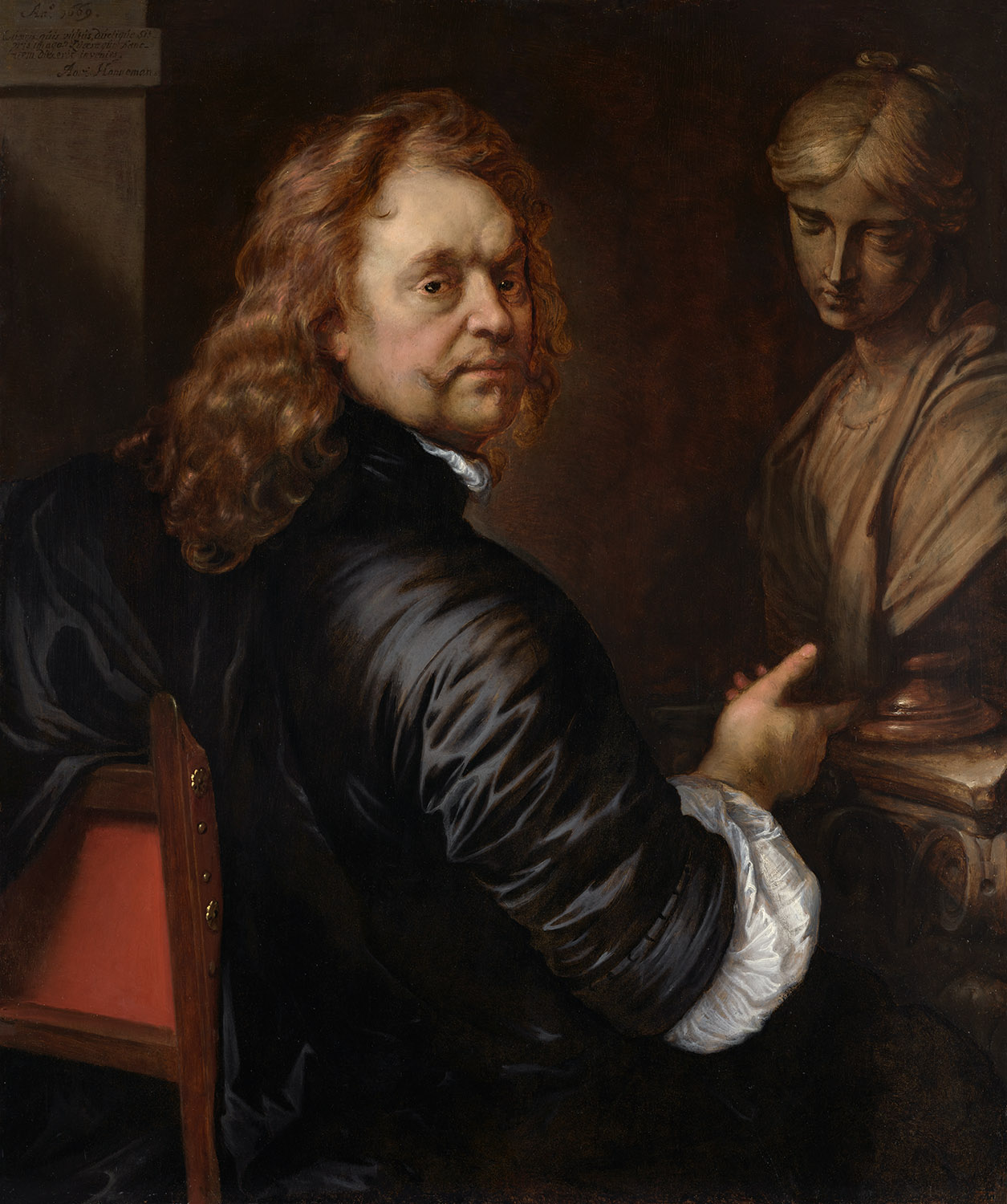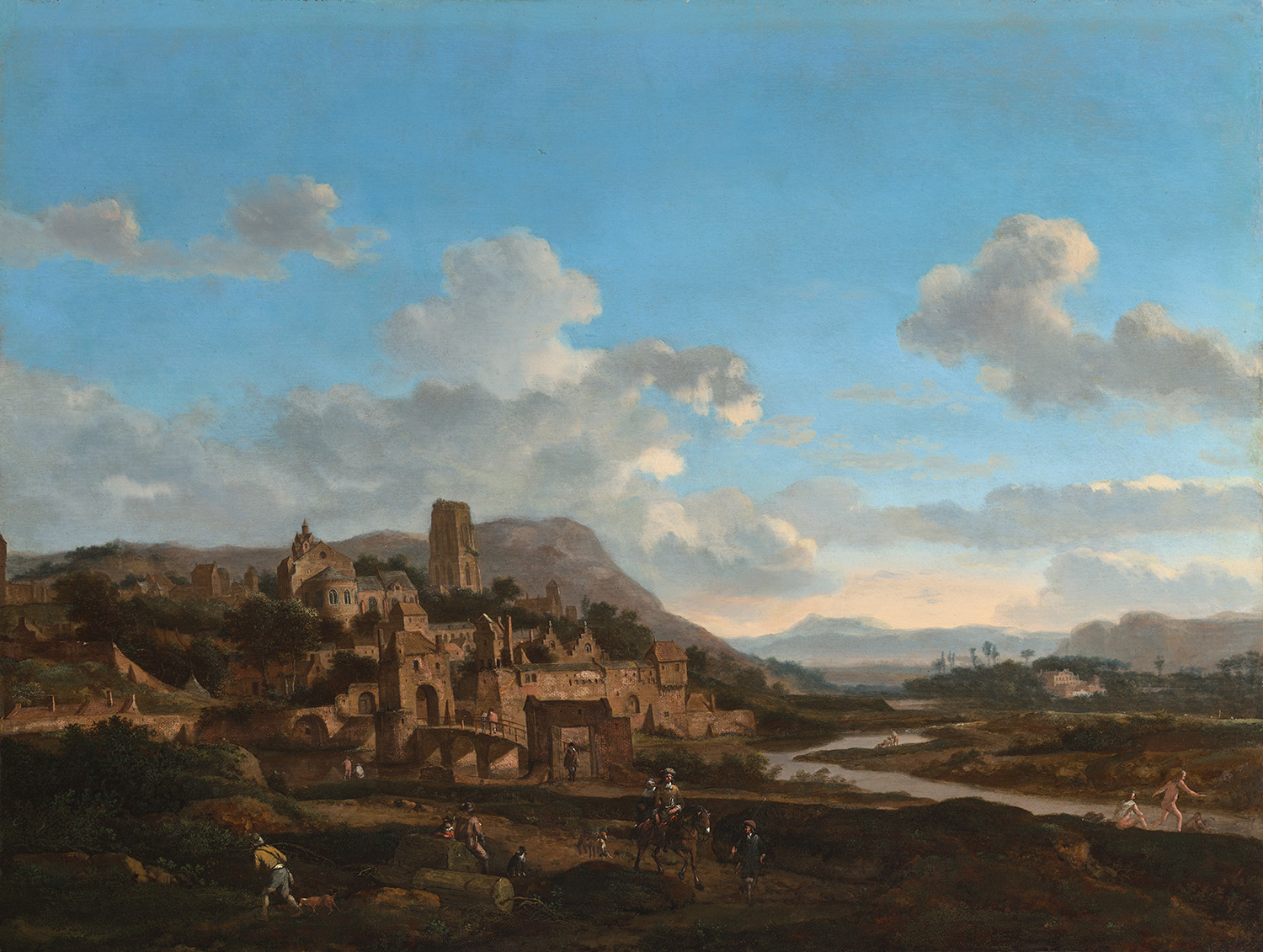The subtle light falling on the rear wall is depicted with exceptional beauty in all De Heem’s still lifes with books. The (natural) source of this illumination, however, is revealed only in this earliest example, where we find a window at the upper left. The rendering of the light in rectangular patches is also unique, as in the other still lifes a single diagonal serves to divide the lambent and shadowed areas (fig. 1).4 To the left of the table set against the wall in a comparable work of 1629 (Oblastní Galerie, Liberec), we see the wooden partition the artist apparently used to vary the luminosity.5 A similar partition can be found in our version as well, as was revealed during the recent restoration. This makes the sharp delineation of the bright areas entirely plausible. The restoration also revealed the picture’s original delicate tonality. The extremely soft colours used for some of the book covers – characteristic of the still lifes of the Leiden masters in this period – demonstrate the young painter’s talent.
Still lifes with books were extremely popular in the second quarter of the seventeenth century, particularly among painters in Leiden.6 It is not entirely clear who brought the genre to the northern Netherlands initially. Its earliest practitioner appears to have been Jacques de Gheyn II, who is thought to have painted a still life with this motif already in 1621, although the date on the painting is uncertain. An important role should be assigned to De Heem himself, whose dated still lifes with books must be counted among the first of their kind. In any case, the subject was tackled by the pick of Leiden painters, among them two of De Heem’s coevals who in 1628 had yet to make a name for themselves: Jan Lievens (cat. nos. 35 and 36) and Rembrandt (cat. no. 50). De Heem, who was nothing if not chameleon-like in his style, was clearly inspired by the painters active in his new place of residence. Like his contemporaries Lievens and Rembrandt, he, too, used the handle of his brush or other sharp tool to scratch into the wet paint, in order, for example, to indicate the pages of several of the tomes (see also cat. no. 35). De Heem used this technique in his other still lifes as well.
Symbols of mortality were often incorporated into this sort of picture: in De Heem’s other still lifes with books we find such explicit references as a skull, the word ‘Finis’ (‘End’), or the phrase ‘vanitas vanitatis’ (‘Vanity of vanities’), which actually appears twice.7 In this case, however, the symbolism is more subtle. Books played an important role in seventeenth century moral thought, being regarded as a source of wisdom and knowledge. In an emblem book of 1611 by Gabriël Rollenhagen, for example, the reader is encouraged to renounce worldly goods and devote himself to study.8 In this picture, both the books and the globe may be understood as sources of – transient – knowledge. As we see here, though, even books themselves – which were to make the ideas of mortal authors immortal – are subject
to decay: they have clearly been well used – their pages are creased and torn and some have even lost their bindings – and can thus be interpreted as a literal reference to the ephemerality of all earthly things. In two other similar De Heem still lifes, both also of 1628 – one in the Mauritshuis in The Hague (fig. 1), the other in the Frits Lugt Collection in Paris – this symbolic dimension is enriched by the inclusion of publications dealing with the vicissitudes of fate.9 In the present work, however, not a single edition can be identified, as no titles or authors’ names, even if fragmentary, have been reproduced.
It seems likely that there was a large market in Leiden for still lifes with books: the local university, the country’s oldest, drew many students, scholars and writers who would have appreciated the motif. In this context it is interesting to note that Johan Coornhert, De Heem’s stepfather, was a bookbinder and bookseller, and he may have been helpful in finding buyers for the painter’s work. It is even thought that the two aforementioned still lifes in The Hague and Paris were painted on commission.10 The monochrome, finely tuned colouration and loose brushwork make our version a particularly attractive painting, one whose earliest provenance could be traced no further back than the twentieth century.11

